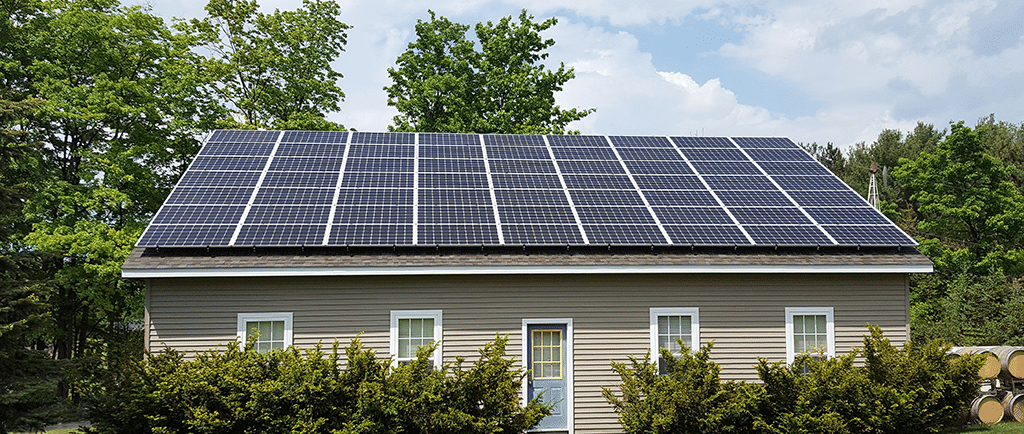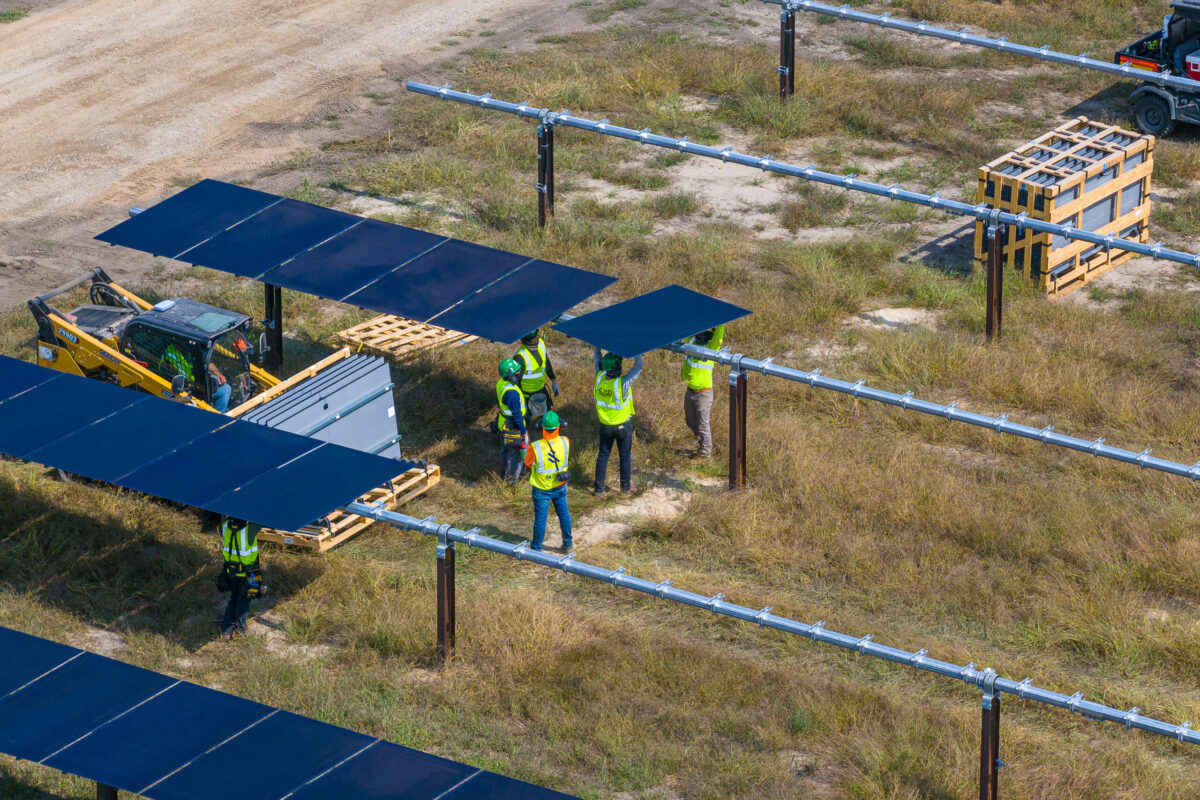Regulators in the state of Michigan have issued a decision that could kill the state’s distributed solar market in its cradle.
On Wednesday the Michigan Public Service Commission (MPSC) scrapped the state’s net metering program and replaced it with an inflow/outflow system, where customers who adopt solar pay full retail rates for the electricity they consume, but are compensated for the electricity they generate according to a calculation of what a utility would otherwise pay to procure power.
Unlike net metering, which calculates net generation versus consumption over the period of a month, Michigan would attempt to calculate total customer-sited generation and total consumption – even though questions have been raised as to whether the state’s advanced metering infrastructure is up to that task.
MPSC has ordered utilities to develop distributed generation tariffs based on “avoided cost”, or to propose an alternative calculation, which will be implemented as of these utilities’ next rate case. Customers who have installed PV systems before these new rates are implemented will be grandfathered under the current net metering rules for 10 years.
Avoided cost and the value of distributed solar
Such “avoided cost” calculations are standard for utility-scale renewable energy generation under the Public Utilities Regulatory Policy Act of 1978; however many studies across the nation have found that distributed generation provides additional benefits which should be considered when determining compensation.
In a study leading to the policy shift MPSC staff did cite the benefits of distributed generation, but made no effort to quantify these benefits or use them in a tariff, and the latest move essentially assigns these benefits zero value. Interveners, including Sunrun, had expressed concern over the treatment of this issue, however the Commission brushed aside such concerns in its final order.
“The Commission finds that the Staff developed a tariff reflecting COS for DG customers based on extensive analysis and the available data, proposed the full retail rate be assigned to customer inflow, and recommended avoided cost as a viable option for the outflow credit,” reads the final order.
“While the Staff also recommended a separate contested proceeding to further quantify an outflow credit due to the controversy surrounding this issue, the Commission does not find that such a recommendation renders the study incomplete.”
This could be seen as an admission that the commission is aware that the findings of its study were out of line with the vast majority of studies conducted on this issue. These have consistently found that the value of generation from distributed solar is greater than retail rate, let alone avoided cost, which is a reflection of wholesale prices.
This has been supported by studies in Michigan was well, with a study by the Institute for Energy Innovation finding that net-metered solar is a net benefit to other utility customers in the state.
Preventing the market from taking root
Utilities have been trying to kill net metering across the United States. However, what is strange about this move in Michigan is that unlike mature or fast-growing markets in California, Nevada and Arizona, Michigan has a small state market, and as such any potential impact on other utility customers from net-metered solar – whether benefits or costs – are negligible at this point.
According to SEIA Michigan was the 24th-largest state market in 2017, with 110 MW installed. According to these figures the vast majority of capacity to date has been utility-scale solar, not distributed generation. MPSC’s own report finds that the state had less than 20 MW of distributed solar installed at the end of 2016.
The state is further insulated from high levels of distributed solar by very conservative caps on the participation of distributed solar in state programs. These currently limit the capacity of distributed solar to only 0.75% of a utility’s peak load, and Michigan was nowhere near that.
And while the state has an estimated 4,000 solar jobs, this sector is clearly at risk from the policy which state regulators have imposed. It should not be a surprise that this policy was highly controversial, with more than 500 comments being filed against a draft proposal, mostly in opposition.
Neither the public outcry nor the disparity between national studies and those of MPSC staff appear to be keeping the Commission, all of whose members were appointed by Governor Rick Snyder (R), up at night.
However, previous states that have hastily gutted net metering, such as Nevada, have seen lawsuits and public mobilization that have led politicians to reconsider their decisions and reinstate the policy.
It is unclear at this time if the solar industry will fight back in Michigan as it did in Nevada. “This decision will restrict homeowners’ ability to invest in rooftop solar and threatens to destabilize Michigan’s solar industry, putting thousands of jobs at risk,” reads a statement from Amy Heart of the Alliance for Solar Choice. “The solar industry will be looking at all options to fix this short-sighted decision, including legislative solutions.”
Correction: This article was corrected on April 22 at 7:30 PM EST. The article previously stated that utilities would have to come up with their new tariffs for DG customers based on avoided cost by June 1. This was incorrect; the new DG tariffs will be developed in the utilities’ next rate cases, whenever those are, and this article has been changed to reflect that.
This content is protected by copyright and may not be reused. If you want to cooperate with us and would like to reuse some of our content, please contact: editors@pv-magazine.com.









Sounds like an ALEX bill to me
In terms of the legislation that pushed this process, you may be right. I haven’t looked into that detail yet.
The GOP strikes again.
Typically republican-if it doesn’t spell profits for the 1%er’s, it’s got to go.
The Republicans have to voted out and this needs to be corrected! No more of this GOP CRAP. Just like the Flint Water Crisis and Rockford Michigan PFAS pollution.
They don’t care for the 99 percent of us.
If we don’t care for the environment now our kids will have nothing. Solar is only the start to cleaning things up in Michigan. But first we need to get rid of the old GOP ( Old White Men ) and bring people who want to balance the equation.
no problem, good business. why should consumers power pay me more than they would have to pay for power from another utility. some one has to pay for the lines and maintainance.
Interesting, here in Connecticut it’s the democrats voting to scrap net metering. I guess it’s an equal opportunity, bi-partisan hunting season on Solar installations.
Right. That’s New England Democrats for you. Similar kind of politics in Massachusetts House leadership.
i was seriously considering installing a complete solar system on our farm but who can trust the politicians to perform their duties nowadays
These electric utilities know their days are numbered, as distributed generation gets cheaper and battery storage gets cheaper, going off grid without life style changes will become reality. All of us with current net metering contracts that are grandfathered in will be saving our cash for battery storage!